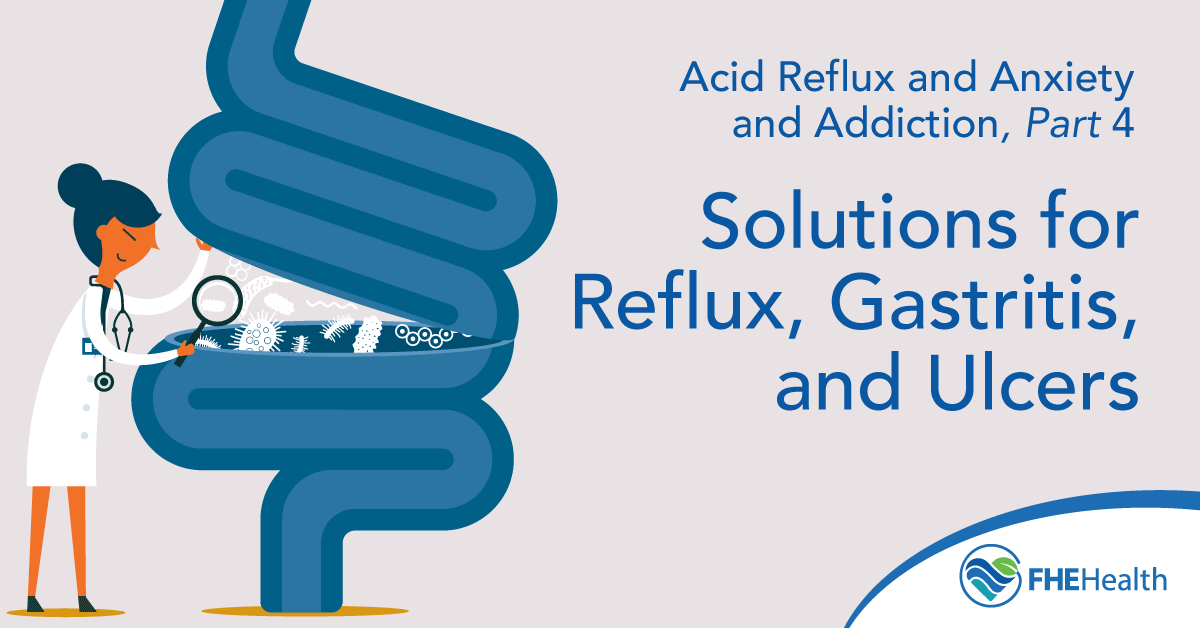
When reflux, gastritis, or ulcers flare up, many people are told that acid suppression is the only solution. While Proton Pump Inhibitors (PPIs) can provide rapid and effective symptom relief, particularly during acute phases or active tissue healing, they are not typically recommended for long-term use due to potential side effects. This is where functional medicine tools can offer valuable additional support. By addressing underlying root causes and promoting tissue repair, these integrative approaches can complement medical treatment and help support more lasting, sustainable gut health.
Cultures around the world have long used herbs and foods to calm inflammation and support digestive healing. And now, growing research is showing that when used alongside conventional treatments, these natural therapies can enhance outcomes, support mucosal repair, and even help during the process of weaning off acid-suppressing medications.
This article explores why reflux happens and which natural strategies may help protect and heal the gut lining while relieving symptoms.
Is Too Much Stomach Acid Really the Problem?
Contrary to popular belief, overproduction of stomach acid is rarely the cause of reflux. While it can occur in a few medical conditions, most people with GERD have other underlying issues, such as:
- Impaired motility (slow movement through the GI tract)
- Weakness or dysfunction of the lower esophageal sphincter (LES)
- Structural conditions like hiatal hernia
- Delayed gastric emptying
- Disrupted bile flow or poor digestive secretions
- Increased sensitivity due to inflammation or mucosal injury
Instead of solely focusing on turning off acid production, it’s often more effective to also support the mucosal barrier and enhance overall digestive function. In fact, research has shown that combining herbal therapies with PPI use can provide added benefits as compared to medication alone (5, 9, 14). Improved symptom relief and mucosal healing are some of these benefits.
Common Food Triggers
Many people with GERD or gastritis notice clear food triggers. Some of the most common include:
- Acidic foods: tomatoes, citrus fruits
- Caffeine: coffee, chocolate, tea
- Spicy foods
- Carbonated beverages
- High-fat or fried foods
Other individualized triggers can include:
- Sugar
- Mint
- Dairy (milk, cream, ice cream)
- Vinegar
- Garlic and onions
- Certain fruits
Tracking symptoms and meals for 1–2 weeks can help identify personal food triggers. The good news is that once the underlying issues are addressed and healing takes place, many people find they can gradually reintroduce previously problematic foods without discomfort.
Zinc Carnosine: A Key Gut-Healing Nutrient
Zinc is known for skin repair, but it also plays an important role in healing the lining of the GI tract. A special form—zinc carnosine—has been shown to be particularly helpful in reducing inflammation, healing ulcers, and supporting gastric tissue (1-2).
Interestingly, animal studies have shown that zinc deficiency can cause excess stomach acid production, (3) and zinc supplementation may actually decrease stomach acid secretion (4), making it a valuable addition for those with both inflammation and excess acid. Zinc carnosine is found in many gut-repair formulas, including Gastromend HP.
Soothing Herbs for the Digestive Tract
Several herbal compounds have been used traditionally and studied for their ability to coat, protect, and repair the lining of the stomach and esophagus:
- DGL (deglycyrrhizinated licorice) (5-7)
- Slippery elm (8-9)
- Marshmallow root (10)
- Mastic gum (11-12)
- Aloe vera (specifically the inner leaf gel) (9, 13-14)
These herbs can be found in combination formulas or used individually. Slippery elm and marshmallow root are available in tea form, and fresh aloe can be taken as 1 tablespoon of inner leaf gel scooped directly from the plant before meals for soothing relief.
Manuka Honey for Reflux and Ulcer Relief
Manuka honey is a functional food made by bees that pollinate the Manuka bush in New Zealand and Australia. Unlike regular honey, Manuka contains a high concentration of methylglyoxal (MGO), a compound responsible for its powerful antibacterial and anti-inflammatory benefits.
Research has shown that Manuka honey with an MGO rating of 400 or higher may help heal the esophageal lining and reduce acid reflux symptoms (15). Taking a small amount (½ to 1 teaspoon) before meals can coat and protect the upper digestive tract.
The Return of “Vitamin U” and Cabbage Juice
In the 1950s, researchers discovered that raw cabbage juice could help heal stomach ulcers, thanks in part to a compound they nicknamed “Vitamin U” (now known as S-methylmethionine). While early studies focused on this one compound, newer research has shown that it’s the combination of Vitamin U and the flavonoids (antioxidants) in cabbage that protect the gastric lining and reduce acid secretion (16).
A 2021 study found that concentrated cabbage extract supported healing of the gut lining and decreased gastric acid secretion (16). You can include raw cabbage or broccoli sprouts in the diet or use concentrated extracts when appropriate. Gastromend HP is one supplement that includes Vitamin U as part of its healing formula.
Other Functional Foods
Emerging research also highlights the role of anti-inflammatory herbs and fiber-rich diets in managing reflux symptoms. Turmeric, particularly its active compound curcumin, has been shown to protect the esophageal and gastric lining by reducing inflammation and oxidative stress, making it a promising natural option for reflux and gastritis support (19).
A high-fiber diet may reduce reflux symptoms through several mechanisms. Research shows that fiber can help increase bowel movement frequency, reducing gastric stasis and pressure in the stomach. It may also form acid-blocking “gastric rafts” and positively influence the gut microbiome, which plays a role in gut-brain communication and digestive function. Research has shown that a high fiber diet can improve reflux (20-21).
Supportive Supplements and Functional Foods
Here are some key options for supporting digestive healing.
Supplements:
- For general reflux: Pure Encapsulations DGL Plus or Orthomolecular DGL
- For ulcers and gastritis: Gastromend HP (includes zinc carnosine, mastic gum, and Vitamin U)
Functional foods:
- Fresh aloe vera inner leaf gel (1 Tbsp before meals)
- Manuka honey (MGO 250+ minimum; MGO 400+ preferred)
- Raw cabbage or cabbage juice
- Broccoli sprouts and other cruciferous vegetables
- Turmeric add to dishes with extra virgin olive oil and black pepper
What About Alginates?
Alginates are compounds derived from seaweed that form a physical barrier on top of the stomach contents, preventing acid from refluxing into the esophagus. They’re commonly found in Gaviscon, which is sometimes recommended for reflux relief.
However, Gaviscon contains artificial sweeteners and additives. A great alternative is Life Extension’s Esophageal Guardian, which contains alginate along with antioxidant extracts and other beneficial ingredients, offering a more natural option.
Can These Help You Wean Off PPIs?
In some cases, yes, but always under medical supervision. Weaning off PPIs too quickly can lead to rebound acid production. Fortunately, a clinical study found that combining DGL, antioxidants, and alginate improved outcomes during PPI tapering better than using alginate alone (5). This highlights the importance of supporting the mucosal lining and reducing inflammation alongside acid reduction.
Final Thoughts: Integrative Support for Lasting Relief
PPIs and acid blockers can play an important role in treatment—particularly in the short term or during periods of active inflammation. However, for many people, additional support is needed, and underlying factors must be addressed in order to successfully reduce reliance on these medications or taper off them safely.
By combining conventional medications with soothing herbs, healing nutrients, and anti-inflammatory foods, we can support the body’s natural repair processes, reduce symptoms, and build a foundation for long-term digestive health.
If you’re working with a healthcare provider to treat reflux, gastritis, or ulcers, consider asking about these natural options as part of a comprehensive plan.
If you haven’t yet started medication, consider discussing with your doctor whether it’s appropriate to try some of these evidence-based natural options first. Some research suggests that certain herbs and nutrients may offer comparable symptom relief and healing to PPIs (13, 17-18), especially when combined with dietary and lifestyle changes.
Next in the series, we’ll explore how low stomach acid can actually cause reflux symptoms, who is most at risk, how it impacts other areas of health, and the functional strategies used to address it effectively.






